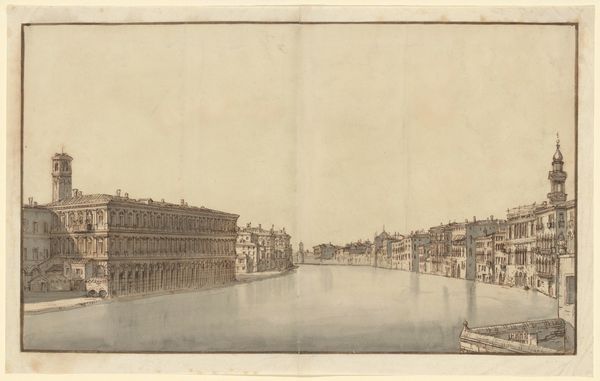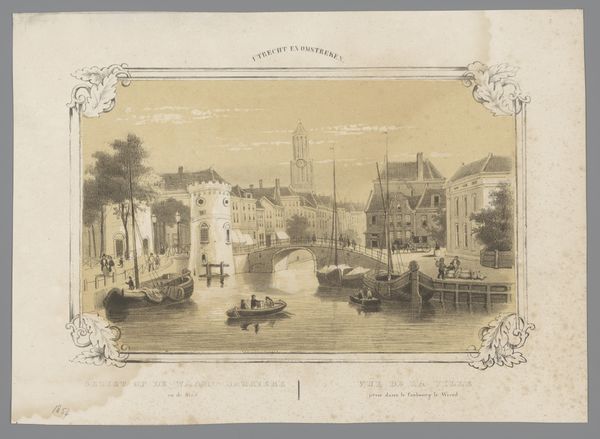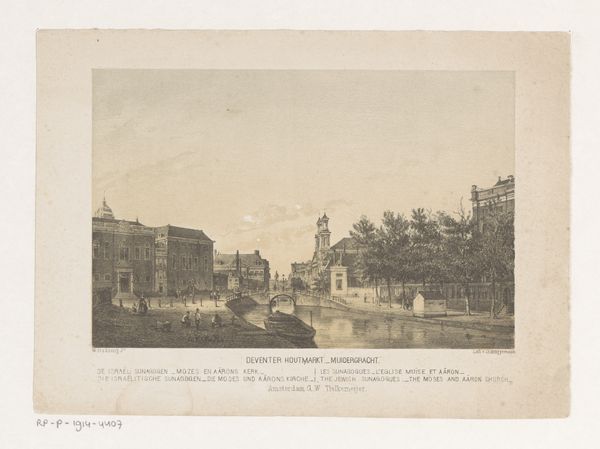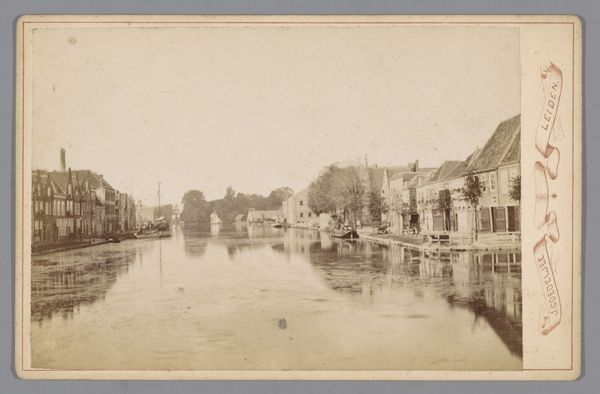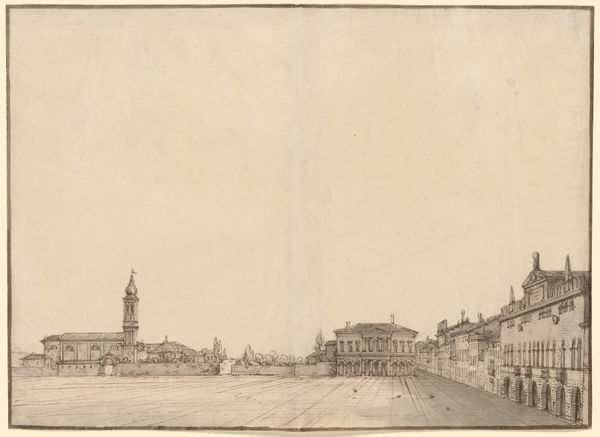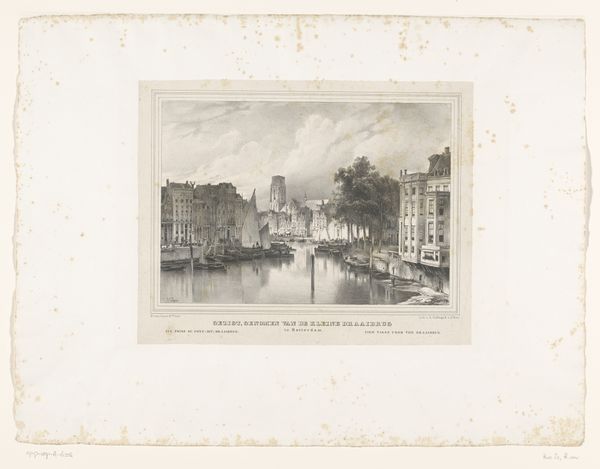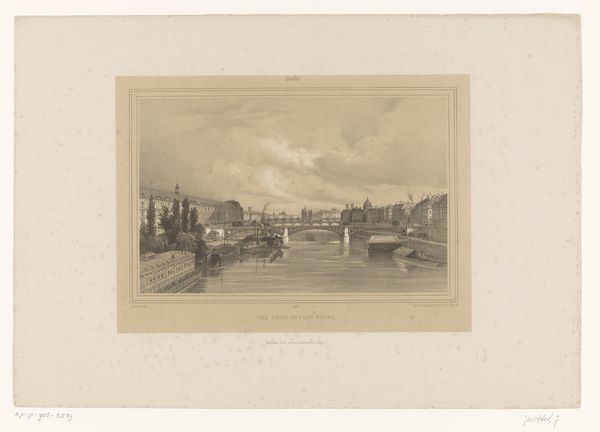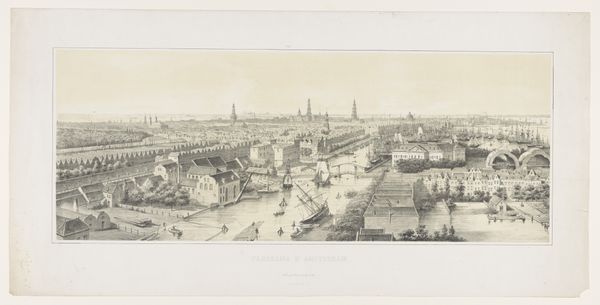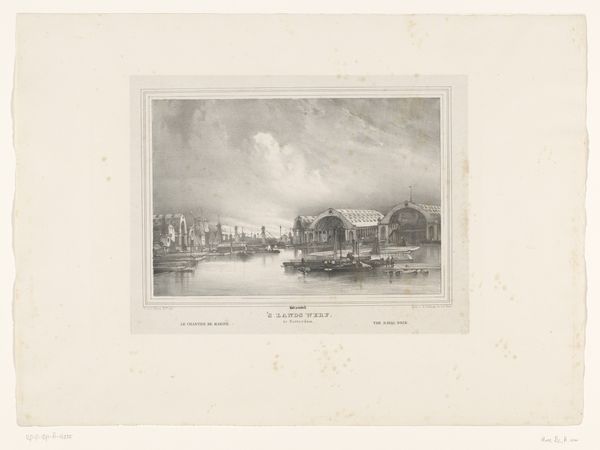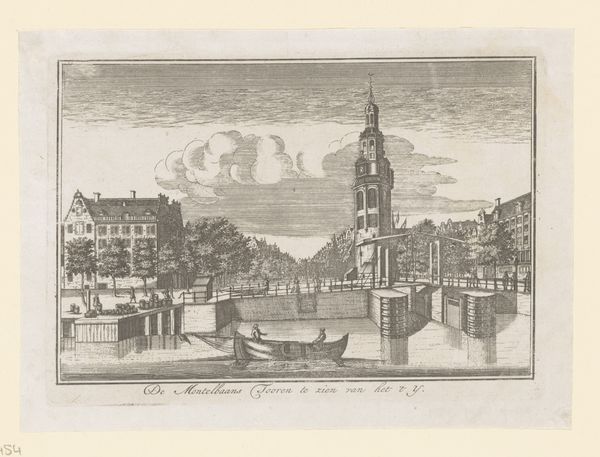
The Grand Canal from Ca'Moro-Lin and Ca'Foscari to the Carità 1733 - 1740
0:00
0:00
drawing, watercolor
#
drawing
#
venetian-painting
#
baroque
#
landscape
#
watercolor
#
cityscape
#
watercolor
Dimensions: 9 15/16 x 16 15/16 in. (25.3 x 43.1 cm)
Copyright: Public Domain
Editor: This is Bernardo Bellotto's watercolor and pen drawing, "The Grand Canal from Ca' Moro-Lin and Ca' Foscari to the Carità", made sometime between 1733 and 1740. It looks incredibly detailed and calm. What's your take on it? Curator: Calm, perhaps on the surface. But consider the means of its production. Bellotto's meticulous technique, using watercolor on paper, points to the labor involved. Think of the paper itself—made by hand, a costly material reflecting Venice's economic power. And those buildings? Each stone quarried, transported, placed... what does that say about Venice at that time? Editor: It suggests prosperity and control over resources? Curator: Exactly. But also, consumption. These buildings aren’t merely shelters; they’re statements. The architecture advertises Venice's mercantile dominance. Consider how the Canal facilitates trade – ships bringing raw materials, goods being exported. Do you see how Bellotto subtly depicts the veins of commerce? Editor: So, it's not just a pretty picture, it's evidence of economic and material flows? It makes you think about where everything comes from, and who benefits. Curator: Precisely. Bellotto wasn't simply capturing a scene; he was inadvertently documenting a complex system of production, consumption, and power relations embedded in the very fabric of the city. Editor: I didn't think about it that way. Thanks, it has given me an entire fresh viewpoint. Curator: My pleasure, looking at the method of material construction certainly makes history seem to pop into existence, I learned something here as well.
Comments
No comments
Be the first to comment and join the conversation on the ultimate creative platform.
